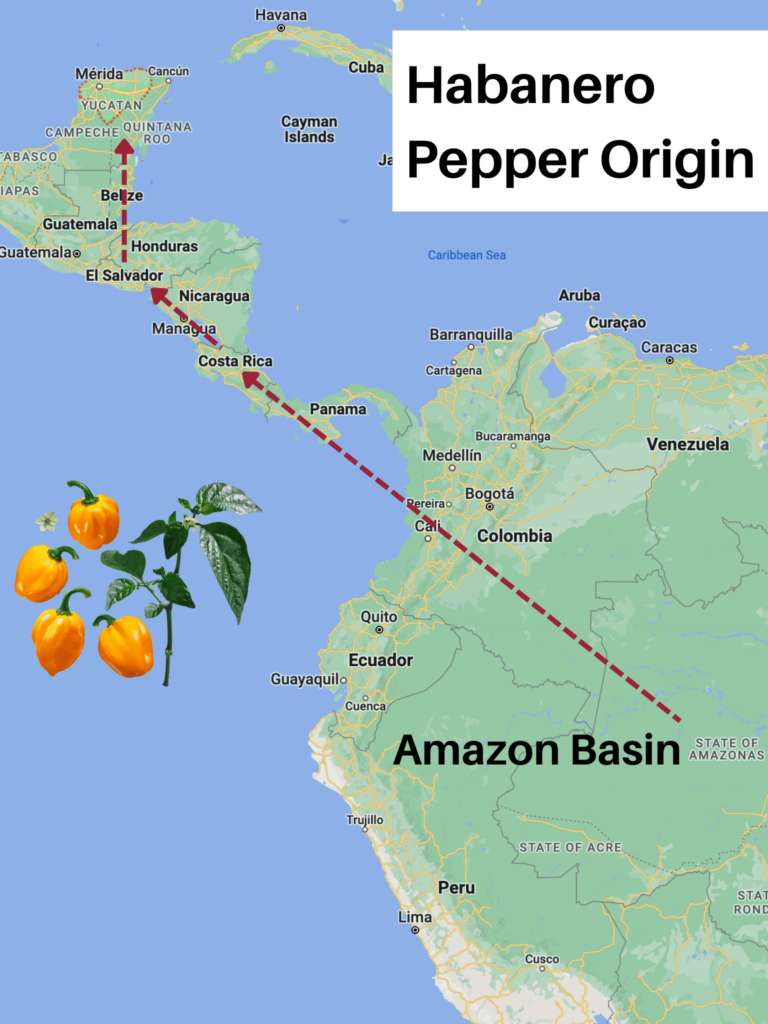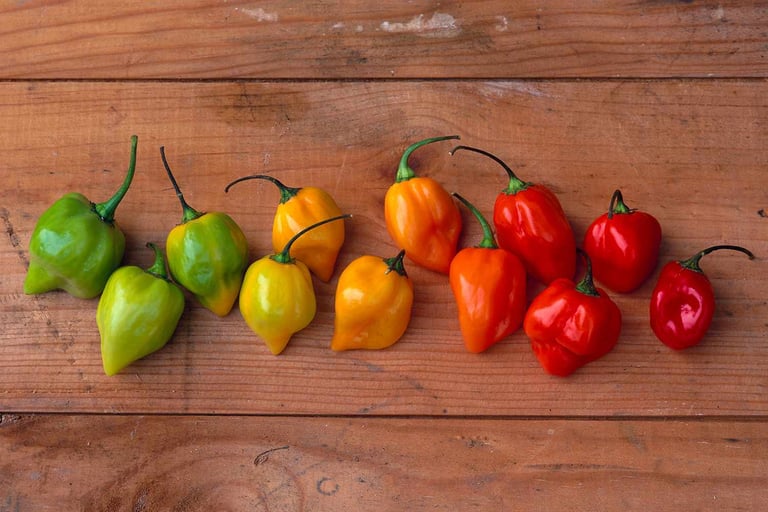Unleashing the Fiery Flavor: A Deep Dive into the Habanero Pepper
Sammy Yepes
10/16/20233 min read


Among the world of peppers, the habanero stands out as a fiery gem, renowned for its intense heat and distinct fruity flavor. In this detailed exploration, we'll delve into the origins, characteristics, culinary uses, and even the health benefits of the habanero pepper, providing a comprehensive guide for those who dare to spice up their culinary adventures.
The Origins and History
The habanero pepper (Capsicum chinense) is believed to have originated in the Amazon basin and later migrated to the Yucatan Peninsula in Mexico. Named after the Cuban city of La Habana, where it was one of the first major producers of this spicy pepper. The habanero pepper has become a staple in Caribbean, Mexican, and Central American cuisines, adding not just heat but also a unique fruity flavor to dishes. Habanero peppers eventually spread to Costa Rica, Belize, Mexico, Europe and other parts of the world. In time, this exposure reached Dutch botanist — Nikolaus Joseph von Jacquin — where he misidentified the Habanero as “capsicum Chinense” or “Chinese pepper.”
Currently, the Yucatán Peninsula is the largest provider of Chile Habanero. And these peppers are serious business!
Characteristics of the Habanero Pepper
Appearance:
Size: Typically small, measuring 1 to 2.5 inches in length.
Color: Ranging from green to bright orange, red, or even brown when fully ripe.
Shape: Lantern-shaped, with a distinctive wrinkled surface.
Heat Level:
Scoville Heat Units (SHU): Habaneros are known for their high heat, ranging from 100,000 to 350,000 SHU. Some varieties, like the Carolina Reaper, a crossbreed with habanero lineage, exceed 2 million SHU.
Heat Perception: The heat of habaneros is not just intense but has a quick onset, making it a pepper that can surprise even seasoned spice enthusiasts.
Flavor Profile:
Fruity Aroma: Beyond the heat, habaneros are prized for their unique fruity and citrusy aroma, which adds complexity to their flavor profile.
Flavor Notes: While the primary sensation is heat, the flavor notes include hints of apricot, citrus, and a slightly sweet undertone.
Culinary Uses
Cooking Tips:
Handle with Care: Due to their intense heat, it's essential to handle habaneros with caution. Wearing gloves while cutting and handling them is advisable.
Balancing Heat: To balance the heat, use habaneros sparingly in dishes. Their fruity flavor pairs well with tropical fruits, tomatoes, and meats.
Recipe Ideas:
Mango Habanero Salsa: Dice ripe mangoes, tomatoes, onions, and habaneros for a sweet and spicy salsa, perfect for dipping or topping grilled meats.
Habanero Hot Sauce: Blend habaneros with garlic, vinegar, and salt to create a homemade hot sauce that can elevate a variety of dishes.
Spicy Caribbean Jerk Chicken: Marinate chicken in a mixture of habanero, allspice, thyme, and other spices for an authentic Caribbean flavor.
Health Benefits
Rich in Vitamins: Habaneros are a good source of vitamins A and C, contributing to skin health, immune function, and antioxidant defense.
Metabolism Boost: The capsaicin in habaneros has been linked to increased metabolism, potentially aiding in weight management.
Pain Relief: Capsaicin is known for its analgesic properties, and habaneros, when consumed in moderation, may offer relief from certain types of pain.
Heart Health: Some studies suggest that capsaicin may help improve heart health by reducing cholesterol levels and promoting cardiovascular function.
Conclusion
The habanero pepper, with its potent heat and fruity undertones, is a culinary force to be reckoned with. While it may not be for the faint of heart, those who appreciate the thrill of spice will find a world of flavor within the confines of this tiny lantern-shaped pepper. Whether you're crafting a fiery hot sauce or adding a kick to your favorite dishes, the habanero is a pepper that commands respect in the kitchen. So, embrace the heat, savor the flavor, and let the habanero pepper ignite your culinary creativity.




